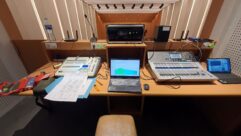
Editor’s Note: Always Room for (Self) Improvement
Sep 1, 2004 12:00 PM,
By Mark Johnson
I am on the downhill slope of 50 years old and have been involved in some form of live sound mixing for more than 30 of those years. During those times, I was being educated in the science and art of sound mixing (though sometimes I thought I knew it all). Given the evolution of the industry, learning new technologies and applications is pretty much a constant challenge. And I still have much to learn about the state-of-the-art of live sound.
In a recent “20 Years Ago in Sound & Video Contractor,” I wrote about a guest editorial in which the author recommended that audio people learn more about the other audio disciplines. Recently, I had the opportunity to participate in the recording of a choir. The engineer had an extremely discerning ear and was meticulous in making sure the bass, tenor, alto, and soprano sections blended well and were on pitch. The choir was used to performing live and had never really gone through the recording process. One of the members commented that he had no idea that there could and would be multiple takes of songs (and parts of songs for punching in). I explained to him that if you make a mistake in live sound, it’s forgotten by the listener five minutes later, but in recording, the mistake will live on in perpetuity (and become seemingly more prominent over time), which is just one of the reasons why the recording engineers strive for perfection. In addition to learning more about hard-disk recording, the experience taught me that that even in a live situation, I could be more critical about the quality of mix I present.
Shifting gears to another subject — Web exclusives — check out expanded information about directional low frequencies at www.svconline.com (see the article on p. 38). Bob McCarthy explains how to take omnidirectional low-frequency systems and configure them for a measure of directional control.










